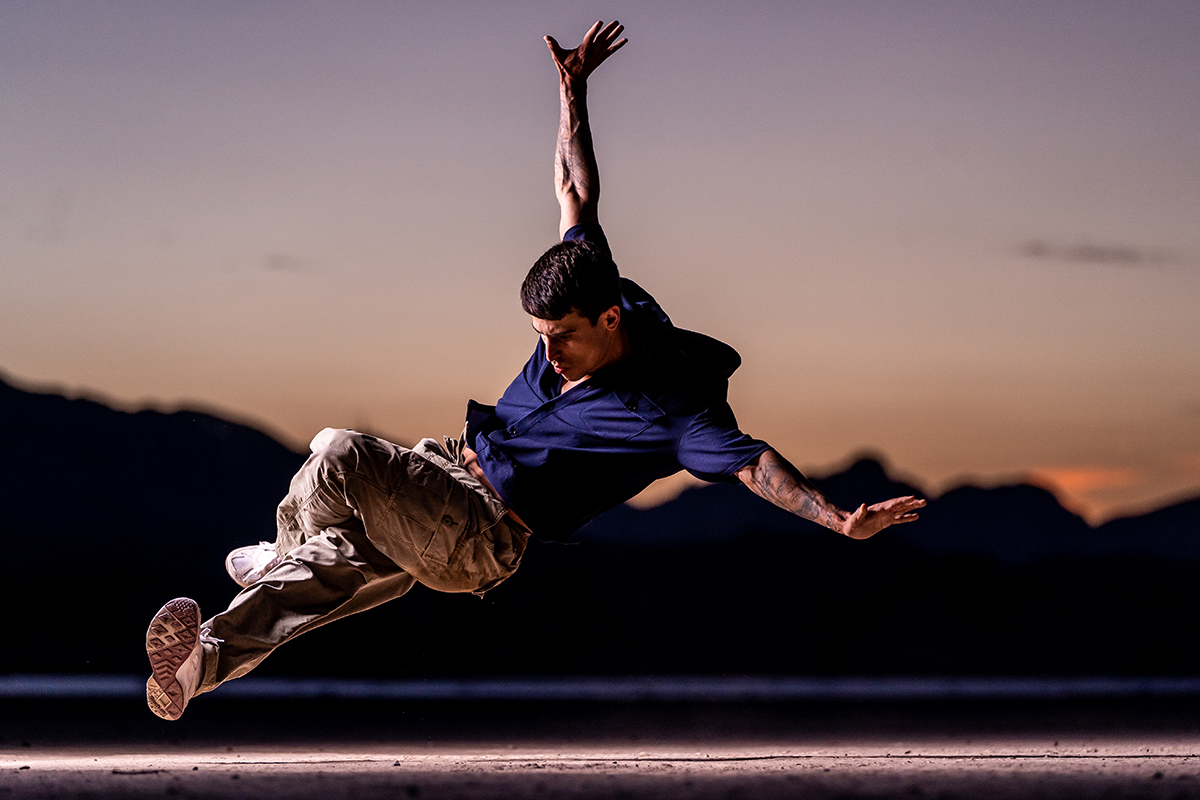Breakdancing in the Desert
Timothy Salaz uses his Tamron 70-180mm Di III VXD zoom lens to compress the scene and capture jaw-dropping moves in a unique environment.
More Photo Tips | Video Gallery | Photo Gallery | Enewsletter sign-up
By Jenn Gidman
Images by Timothy Salaz
For six years, Timothy Salaz was a professional dancer, including for Carnival Cruise Line. That’s why, when he eventually segued into photography, he was instantly drawn to photographing all sorts of dance, including ballet, various forms of Native American dance, and a style that’s especially close to his own heart: breakdancing. “I was a b-boy for about a year,” he says. “That’s the community I already had a foot inside when I started taking pictures, so my brain was already programmed for speaking my subjects’ language.”
During COVID, Timothy turned a desert landscape near his Vegas home into a studio of sorts and started photographing a series of breaking photos. “It was the perfect space, because there was no one around,” he says. Timothy uses a variety of Tamron lenses in his work, but for this particular series he turned his attention to the Tamron 70-180mm F/2.8 Di III VXD telephoto zoom for his Sony mirrorless camera.
“I call the 70-180 the magic lens when it comes to shooting these types of pictures in a desert landscape,” Timothy says. “It has such a cool, cinematographic effect in that it compresses the scene and turns it into almost like a painting. If there’s a pocket of light in one specific part of the sky, I can dial it in, cut off the rest of the dark sky, and turn that one pocket of light into the background thanks to the compression, like I did with the dancer with the red jacket. The rest of the sky had already darkened, but you wouldn’t know it from this shot.”
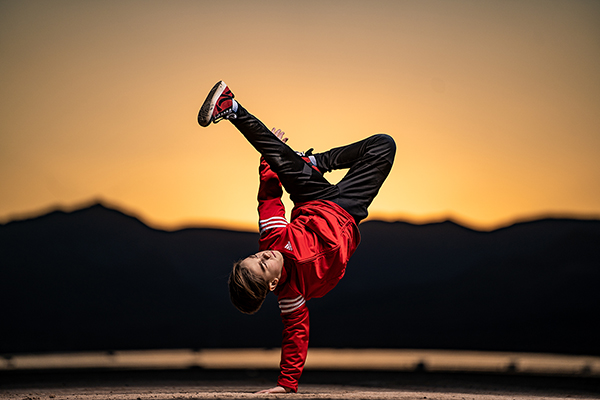
Kai taken at 180mm, F/2.8, 1/2500th sec., ISO 100
Click image to view larger
Being a dancer himself, and understanding the lingo, helps Timothy achieve the photos he wants. “I know a lot of these guys and some of the moves they do,” he says. “I can say, ‘Do the hand hop and then follow that with an airflare,’ and they’ll know immediately what I mean. It makes the shoot go much more quickly and also builds trust and rapport between myself and my subjects.”
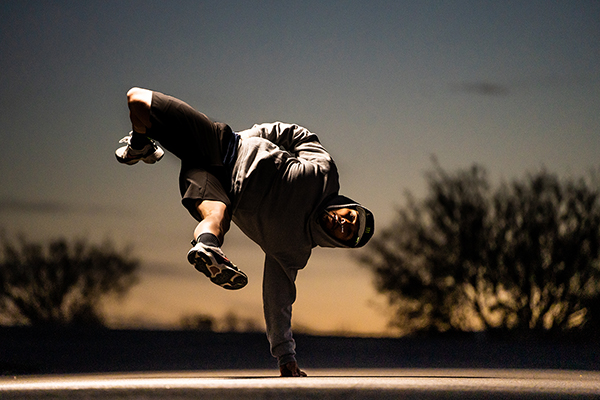
Kareem taken at 171mm, F/2.8, 1/640th sec., ISO 4000
Click image to view larger
Timothy will typically start shooting his breaking photos in the early evening, right before the golden flare of the setting sun, and keep taking pictures until the sky is blue and just about to fade to black. He uses a single strobe to supplement the natural light. “There may be a 180-degree field of view out there, and what’s magical about shooting at that time of day is that the lighting is slightly different everywhere you look,” he says. “If you look toward the sun, the sky might be orange and gold, while if you look further away from the sun, the sky could be pink. And then if you turn around even more, you could get a wall of deep blue. So you can pick and choose where you want to place the dancer to achieve a variety of different looks, though you have to work quickly as the lighting changes.”
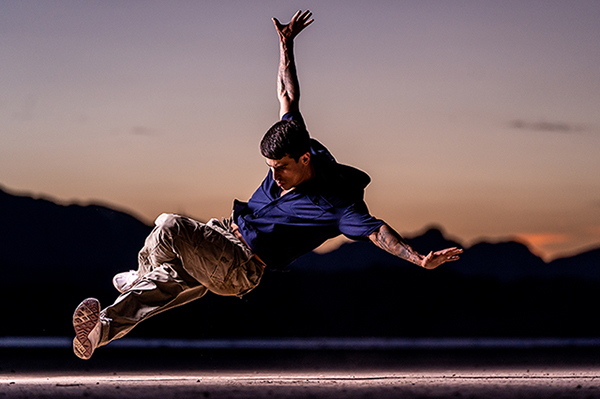
Luka taken at 123mm, F/2.8, 1/2500th sec., ISO 1000
Click image to view larger
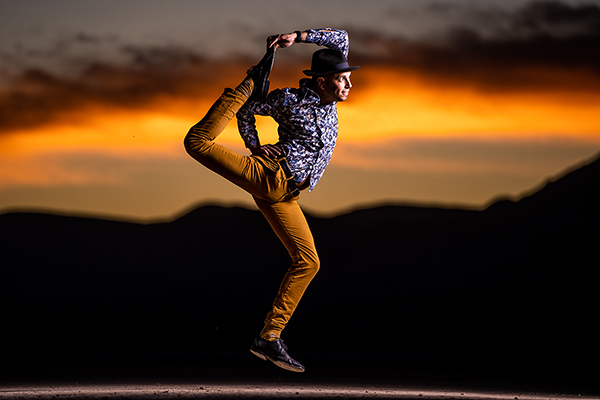
Robert taken at 180mm, F/2.8, 1/1000th sec., ISO 100
Click image to view larger
With this particular form of dance photography, the lighting can sometimes prove tricky. “A lot of the b-boy moves are really low to the ground,” Timothy says. “And if the dancer performs a move that’s upside down and you’re lighting them from underneath, you can get a weird, ghostly effect, like Halloween lighting, or like if someone is sitting over a campfire, with bags under their eyes. You have to find a position so that you’re shooting from somewhere higher than they are, but also still shooting so that the light properly wraps around their face. It can take some trial and error.”
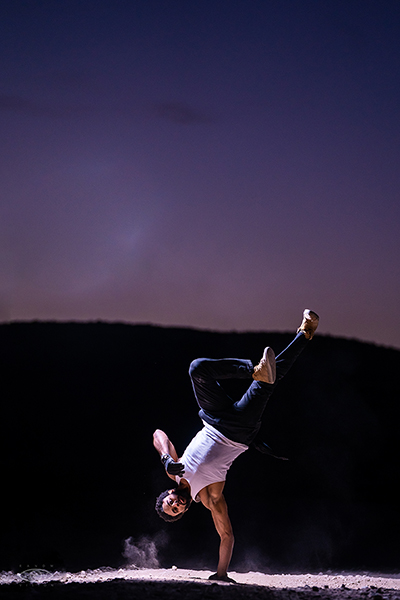
Twix taken at 128mm, F/2.8, 1/2500th sec., ISO 640
Click image to view larger
There are other challenges Timothy has to be cognizant of and ready to compensate for when photographing breakers. “With Native American dancers, for example, their moves aren’t always as dynamic as the breakers’ moves—when I’m photographing those dancers, I often have to ask them to jump and move around a little more than they usually would,” he says. “With breakers, it’s the opposite. They’re constantly on the move, and if you try to capture, say, a flip, it’s just going to look like they’re a ball in the air.”
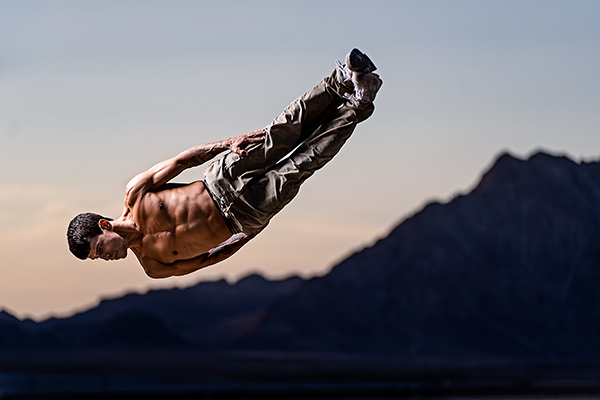
Luka taken at 142mm, F/2.8, 1/3200th sec., ISO 250
Click image to view larger
What Timothy does instead is try to capture the dancers when they’re frozen—breakers often freeze momentarily in the middle of a move, often in a precarious balancing position—or when they’re in a transitional space in between moves. “For instance, one of my subject’s signature moves is to push off the ground with one hand, clap his hands together, and come back down to that one hand,” he says. “And so I’ll capture him in midair, upside down while he’s clapping, which leaves a bit of mystery when you see the photo. You’re not quite sure how he got into that position; it makes zero sense out of context of the entire move. Those photos are my favorites, though, because that’s authentic breaking. That’s the authenticity I want to show when I’m photographing these dancers.”
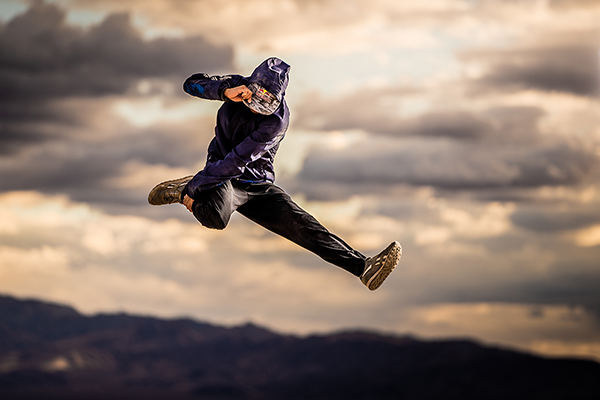
Ronnie taken at 165mm, F/2.8, 1/800th sec., ISO 100
Click image to view larger
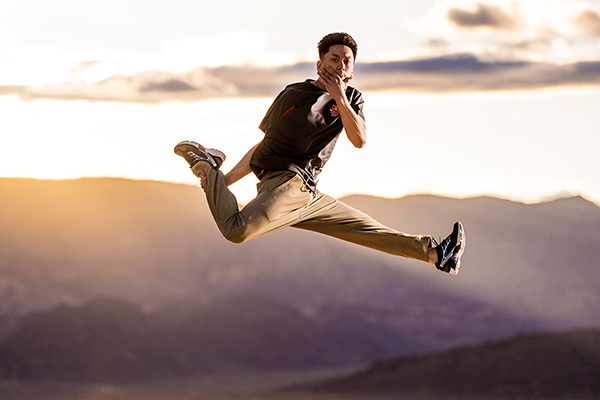
BBoy Ives taken at 131mm, F/2.8, 1/5000th sec., ISO 500
Click image to view larger
To see more of Timothy Salaz’s work, go to www.randmvisionphoto.com or find him on Instagram.
More Photo Tips | Watch Videos | Learn More About Tamron Lenses | Photo Gallery
